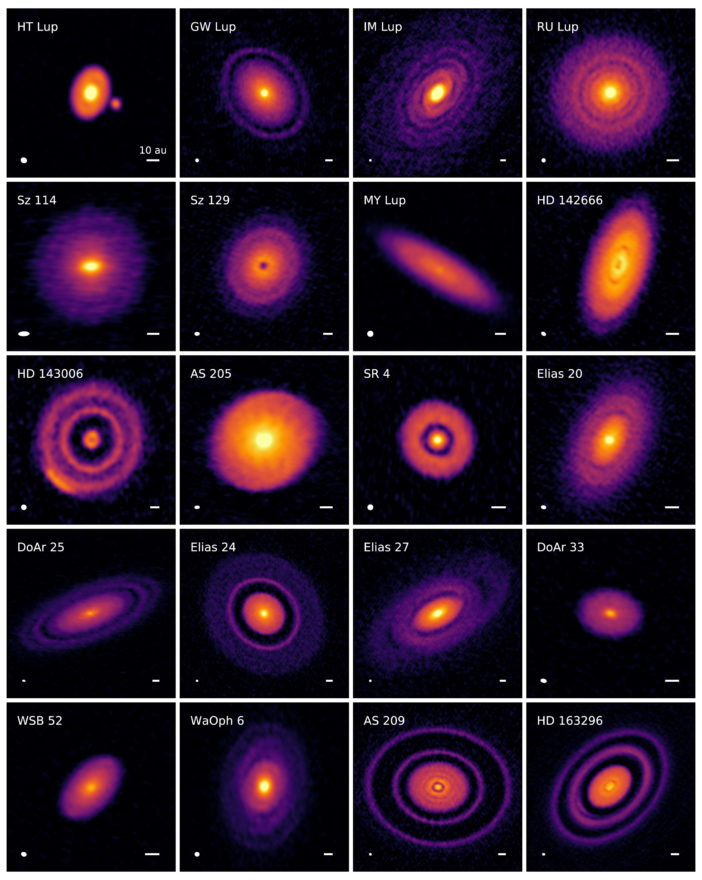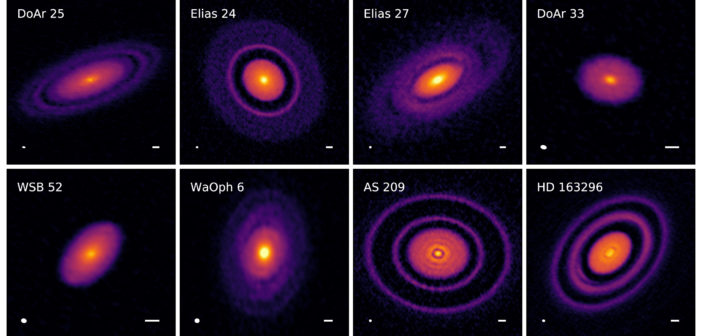What do we know about the detailed structures of protoplanetary disks, the disks of gas in dust in which planets are born? A lot more now, thanks to the Disk Substructures at High Angular Resolution Project (DSHARP) — one of the first large programs conducted using the Atacama Large Millimeter/submillimeter Array (ALMA). DSHARP used the remarkable high resolution of ALMA to explore the substructures formed by solid particles within a sample of 20 nearby protoplanetary disks, revealing a myriad of different small-scale features that may help us to understand how planets first form and evolve in these dusty environments. The image above includes just a subset of the spectacular observations made with DSHARP at 1.3 mm; observations of the full set of 20 disks are shown below. These results come with an expansive public data release; be sure to check out the full Focus Issue on DSHARP to see more spectacular images and read about the authors’ discoveries!

Gallery of 240 GHz (1.25 mm) continuum emission images for the disks in the DSHARP sample. [Andrews et al. 2018]
Citation
“The Disk Substructures at High Angular Resolution Project (DSHARP). I. Motivation, Sample, Calibration, and Overview,” Sean M. Andrews et al. 2018 ApJL 869 L41. doi:10.3847/2041-8213/aaf741


6 Comments
Pingback: Daily Study Log (2019-01-28) | Study Astrophysics
Pingback: AAS Nova – New
Pingback: Hints of Young Solar Systems
Pingback: Hints of Young Solar Systems – Storm-Tech Nomad
Pingback: Hints of Young Solar Systems - Sky & Telescope - Worldika - New Platform For Explore World
Pingback: HINTS OF YOUNG SOLAR SYSTEMS – Tinyworldofstars